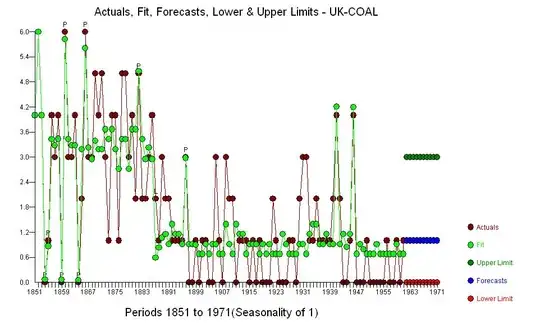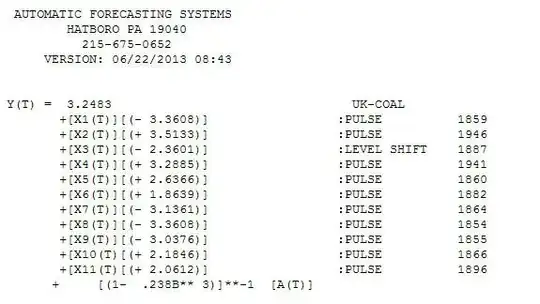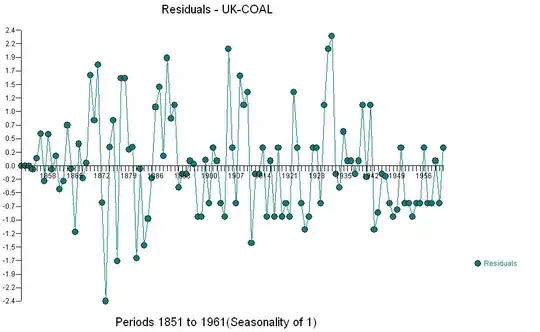Is it possible to determine if distribution of time-series has shifted significantly without assuming any particular underlying data distribution?
Furthermore, would it be possible to identify point of split between (possibly two) distributions?
Any links to softwares or pointers to references would be greatly appreciated.
 The equation says it all.
The equation says it all.  . The residuals do not appear to have any overt Gaussian Violations
. The residuals do not appear to have any overt Gaussian Violations  . The method used was ARIMA plus Intervention Detection . I used AUTOBOX from
. The method used was ARIMA plus Intervention Detection . I used AUTOBOX from